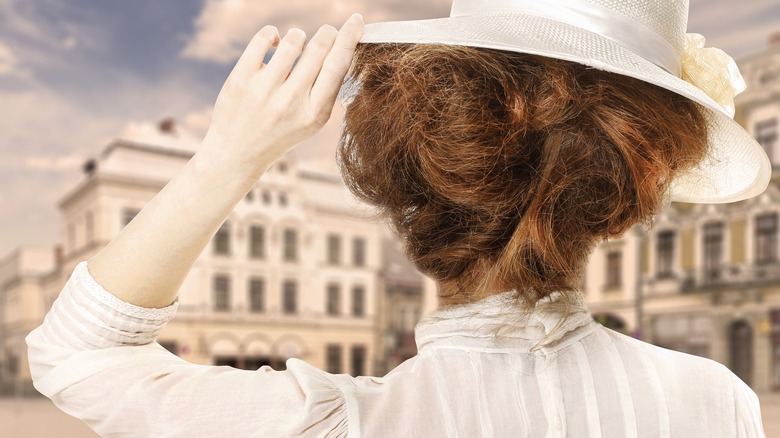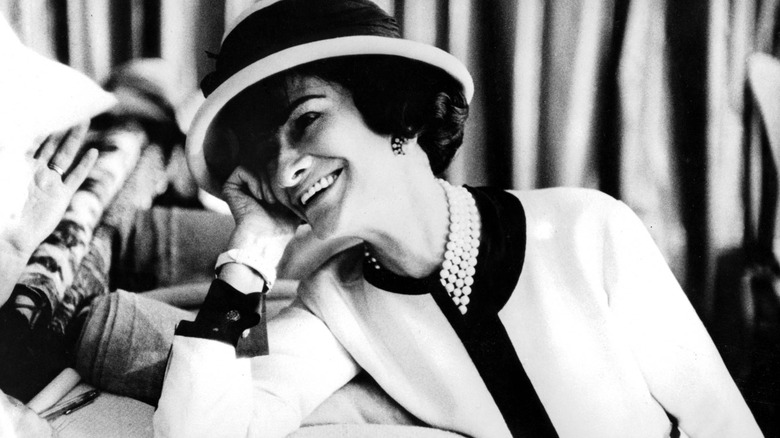The Truth About The No-White-After-Labor-Day Rule
Labor Day is commonly known as the unofficial end of summer and the end of certain ways of dressing, including wearing certain colors. According to Cosmopolitan, colors that trended during recent warmer months included hot pink, lime green, and butter yellow. We also saw Pantone's 2022 Color of the Year Veri Peri — a "red violet infused blue hue highlights," according to Pantone — influence summer fashion trends (via Vogue).
But not all summer colors are bright and bold. Known for being crisp, clean-looking, and making your outfit look expensive, white is a popular color to wear during the summer as well. Historically, this was because of a very simple and practical reason: it kept people cooler than darker colors (via Time). "Not only was there no air-conditioning, but people did not go around in T-shirts and halter tops. They wore what we would now consider fairly formal clothes," said etiquette columnist Judith Martin. "And white is of a lighter weight."
What you probably didn't know, though, is that, during the early 20th century, the practice of wearing white in the summer was symbolic, too.
What the color white represented
According to Time, wearing white clothing was typically associated with wealthier groups of people. It was a way to signify that they could afford to travel to warmer climates during the fall and winter months. As the middle class expanded in the 1950s, the tradition of wearing white evolved into a way for people who came from old money to separate themselves from those who were newly rich. And those same people with new money used the practice of wearing white as a way to rise to the level of those they felt were of elite status. "It [was] insiders trying to keep other people out," said Valerie Steele, director of the Museum at the Fashion Institute of Technology. "And outsiders trying to climb in by proving they know the rules."
Labor Day is meant to celebrate the American workforce and the color white visibly separated people who did not have to work from those who did. "If you look at any photograph of any city in America in the 1930s, you'll see people in dark clothes," Charlie Scheips, author of 'American Fashion,'" told Time. Naturally, it was because those who worked often got their garments dirty with soot, grit, and horse waste (via Racked).
And while wearing white clothing after Labor Day was originally meant to divide wealthy people from the lower class, rules have changed in recent years.
Breaking the fashion rules
Socialite Coco Chanel was one of the first public figures to break the no white after Labor Day rule when she opted for wearing white year-round (via Southern Living). Chanel was a pivotal designer known for thinking outside the box when it came to fashion and her influence and legacy endure.
Today's society is even further evolved from the rules of elite fashion than Chanel was. While white is still commonly associated with the summer season, it is no longer a symbol of socioeconomic ranking. Etiquette expert Emily Post told Southern Living that fashion choices today are less about color. "Wear what's appropriate—for the weather, the season, or the occasion," she said.
Nowadays, fashion is meant to be fun, free, and expressive. And the Labor Day rule is considered an outdated tradition. Enjoy planning your outfits however you wish, even if it means wearing white after September.


